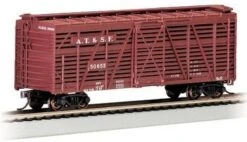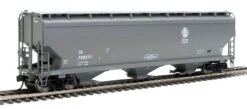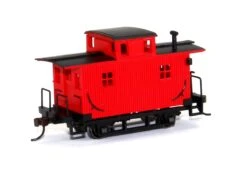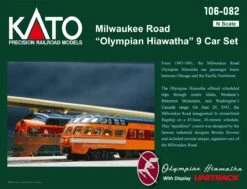$49.99 Original price was: $49.99.$34.99Current price is: $34.99.
- Safe Payments, the Smart Choice
- Online customer care, always here for you.
- Worry-Free Shopping with Safe Payments
- 100% Quality Satisfaction

For many years, reefers relied on ice bunkers to keep loads cool. After World War II, technological advances made mechanical refrigeration practical for a freight car. In addition, a mechanical reefer could be larger than an ice reefer because of the greater cooling capabilities.
Fruit Growers Express owned the largest fleet of reefers in the East. FGE was owned by a group of ten railroads, with Atlantic Coast Line and Southern being two of the largest original owners. Many of FGE cars were built at its Jacksonville Shops, including these 57′ smooth-side mechanical reefers.
57′ MECHANICAL REEFER FEATURES:
Available with onboard SoundTraxx sound
Scaled from prototype manufacturer’s drawings and field measurements
Repaints often vary by road number in the size and style of the reporting marks, car numbers and patch shapes
See-through protective screens on the genset end
Detroit Diesel 2-71 Genset visible inside
End wall corrugation visible inside
Inner refrigerator bulkhead
See through end platforms
Two different exhaust stack types: straight pipe with “flapper” or T-shaped “smokejack” per prototype and era
Full underframe detail including Keystone cushioning, air brake reservoir, control valve, brake cylinder, brake plumbing, and fuel tank
Factory applied end ladders and door closure rods
Trainline hoses with silver ends
Three different coupler cut lever styles per prototype
Body-mounted or truck-mounted brakes per prototype
McHenry operating scale knuckle couplers
100-ton roller bearing trucks with rotating bearing caps
Fully-assembled and ready-to-run
Accurately painted and printed for prototypical realism
Highly-detailed, injection-molded body
Machined metal wheels with RP25 contours
Weighted for trouble-free operation
Minimum radius: 18″ – Recommended radius: 22″
Be the first to review “Athearn Genesis HO G66309 FGE 57′ Mechanical Refrigerator Car, Fruit Growers Express #11700” Cancel reply
Related products
Trains
Centralia Car Shops N 7106-01 Superdome Passenger Car, Chicago And North Western “Powder River” #421
Passenger Cars
Atlas Master Line HO 20006407 10-1-2 Pullman Sleeper, Pennsylvania Railroad “Lake Arthur”











Reviews
There are no reviews yet.